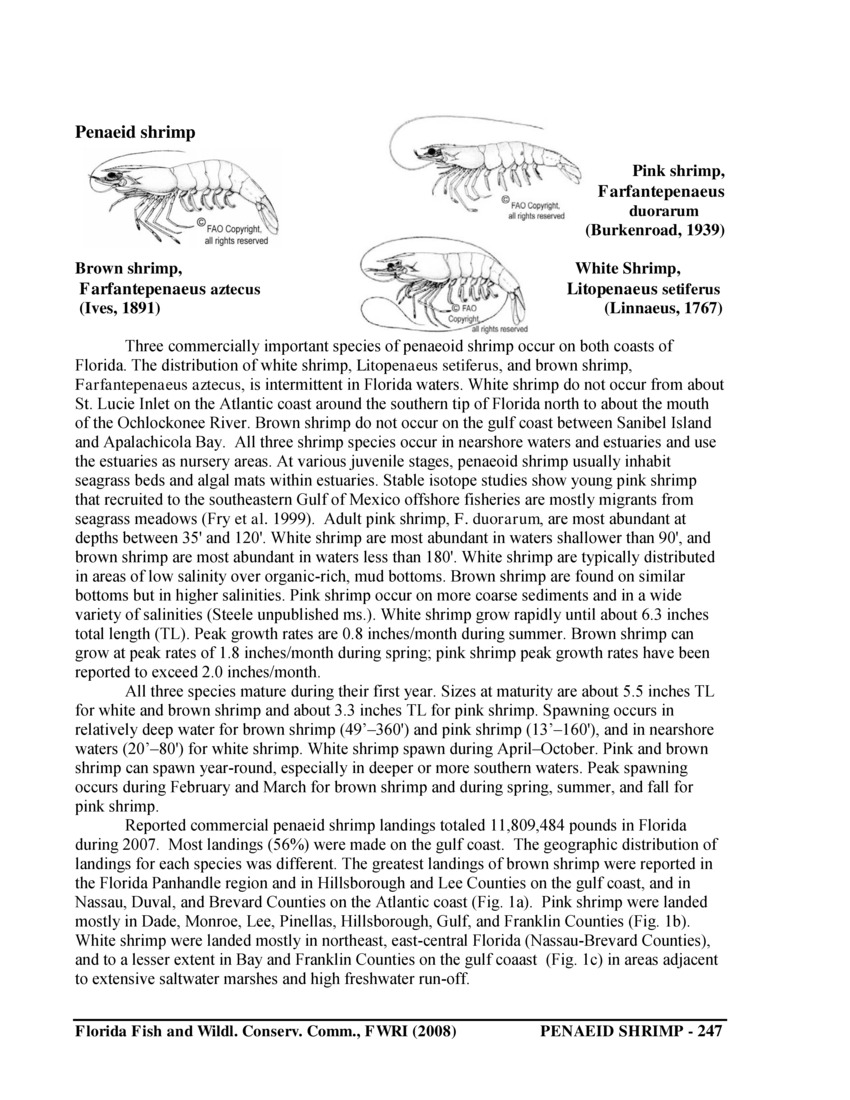Penaeid Shrimp
Three commercially important species of penaeoid shrimp occur on both coasts of Florida. The distribution of white shrimp, Litopenaeus setiferus, and brown shrimp, Farfantepenaeus aztecus, is intermittent in Florida waters. White shrimp do not occur from about St. Lucie Inlet on the Atlantic coast around the southern tip of Florida north to about the mouth of the Ochlockonee River. Brown shrimp do not occur on the gulf coast between Sanibel Island and Apalachicola Bay. All three shrimp species occur in nearshore waters and estuaries and use the estuaries as nursery areas. At various juvenile stages, penaeoid shrimp usually inhabit seagrass beds and algal mats within estuaries. Stable isotope studies show young pink shrimp that recruited to the southeastern Gulf of Mexico offshore fisheries are mostly migrants from seagrass meadows (Fry et al. 1999). Adult pink shrimp, F. duorarum, are most abundant at depths between 35' and 120'. White shrimp are most abundant in waters shallower than 90', and brown shrimp are most abundant in waters less than 180'. White shrimp are typically distributed in areas of low salinity over organic-rich, mud bottoms. Brown shrimp are found on similar bottoms but in higher salinities. Pink shrimp occur on more coarse sediments and in a wide variety of salinities (Steele unpublished ms.). White shrimp grow rapidly until about 6.3 inches total length (TL). Peak growth rates are 0.8 inches/month during summer. Brown shrimp can grow at peak rates of 1.8 inches/month during spring; pink shrimp peak growth rates have been reported to exceed 2.0 inches/month.
Publisher - Florida Fish and Wildlife Conservation Commission (FWC), Fish and Wildlife Research Institute (FWRI)
Subjects - Crustacean, White Shrimp, Litopenaeus setiferus; Crustacean, Pink Shrimp, Farfantepenaeus duorarum; Crustacean, Brown Shrimp, Farfantepenaeus aztecus
Citation: FWRI. 2008. Penaeid Shrimp. St. Petersburg (FL): Florida Fish and Wildlife Conservation Commission (FWC), Fish and Wildlife Research Institute (FWRI). 5 pp http://myfwc.com/media/195867/penaeid_shrimps.pdf
